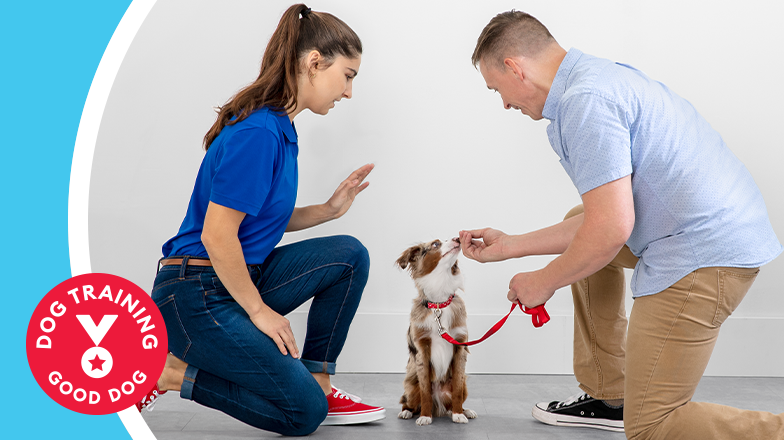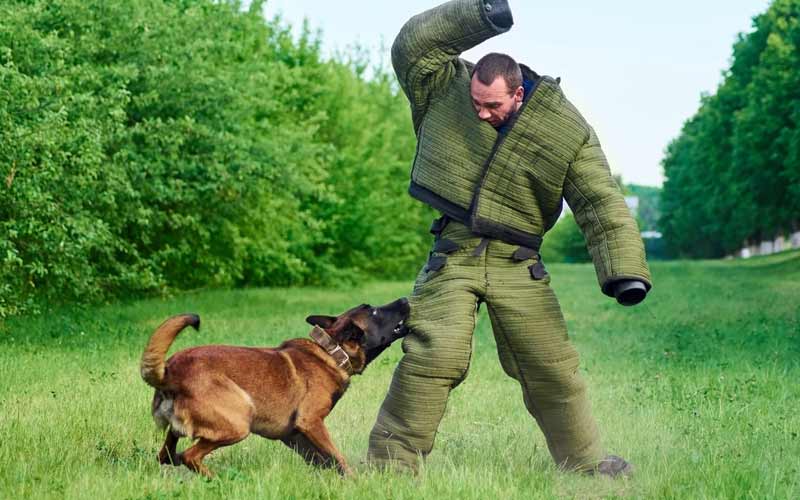Transform Your Dog's Behavior with These Proven Dog Training Methods
Transform Your Dog's Behavior with These Proven Dog Training Methods
Blog Article
Novice's Guide to Successful Canine Training at Home
Efficiently educating a canine at home calls for a nuanced understanding of canine habits and efficient communication strategies. Developing clear training objectives, utilizing top quality rewards, and keeping uniformity across member of the family are important aspects. Incorporating training into day-to-day routines can boost both engagement and retention. Numerous beginner instructors encounter challenges that may hinder development. To browse these complexities efficiently, it's vital to discover several key facets that can change your technique and cause a harmonious connection with your animal. What essential principles should every beginner grip to make certain success?
Understanding Canine Actions
Understanding pet dog behavior is necessary for effective training and fostering a harmonious partnership between human beings and their canine buddies. Canines interact largely through body movement, articulations, and faces, making it critical for owners to translate these signals accurately. Recognizing habits such as tail wagging, roaring, or shrinking can offer understandings into a pet dog's emotion and intentions.

Usual behavior problems, such as hostility, anxiety, or extreme barking, commonly stem from misunderstandings or unmet demands. Observing and resolving these problems quickly can stop escalation and ensure a favorable training experience. By fostering a deep understanding of pet dog actions, owners can customize their training approaches to match their canine companions, eventually leading to a mannerly and satisfied animal.
Crucial Educating Tools
A well-appointed training space can substantially boost the performance of pet training in the house. Important training tools make sure that both the instructor and the dog can take part in efficient sessions that cultivate learning and bonding.

Purchasing a strong leash and a comfy, well-fitting collar or harness is crucial for security and control. These tools assist establish borders and make sure the canine continues to be safe during training. Additionally, an assigned training location, without disturbances, help concentration for both the pet and the fitness instructor.
Educating aids such as training pads, cones, or agility equipment can likewise enhance the experience by introducing selection and difficulties. Last but not least, having a notebook or electronic app for tracking progression can be indispensable, allowing you to keep in mind successes and locations for enhancement. Using these important devices will develop a positive training setting and lay the structure for efficient discovering.
Producing an Educating Regimen
Establishing a consistent training regimen is important for efficient dog training in the house. A well-structured regular not only assists in enhancing preferred actions yet also offers your pet dog with a complacency and you could try this out predictability. To create an efficient training routine, begin by determining details training objectives, such as standard commands, chain strolling, or housebreaking.
Select an assigned time every day for training sessions, preferably when your pet dog is sharp and responsive. Procedure ought to be short, around 5 to 15 mins, to preserve focus and avoid tiredness. Consistency in timing and environment will enhance your dog's learning experience.
Include training into daily tasks to reinforce skills. Technique commands throughout walks or mealtime, which integrates finding out right into all-natural routines. Furthermore, remain flexible and readjust the regular as necessary, suiting your pet's power levels and mood.
Positive Support Strategies
Positive reinforcement strategies are fundamental to efficient canine training, advertising wanted actions with benefits rather than penalty. This technique utilizes favorable stimuli, such as deals with, praise, or playtime, to motivate dogs to duplicate certain actions. The keystone of this technique is timing; rewards should be provided quickly complying with the desired habits to create a clear association.
When executing favorable reinforcement, it is necessary to select rewards that are inspiring for your dog. High-value deals with, such as small pieces of hen or cheese, can be especially reliable during training sessions. Furthermore, differing the benefits can keep your dog's passion and enthusiasm.
Begin with straightforward commands, like "sit" or "remain," and progressively progress to extra complicated jobs. Uniformity is essential; ensure that all household participants use the exact same commands and reward systems to stay clear check that of confusion.
In addition, it is crucial to remain individual and avoid frustration. Canines, like human beings, learn at their own rate. By cultivating a supportive training atmosphere via positive reinforcement, you can improve your pet's knowing experience while reinforcing the bond between you and your fuzzy friend, laying the groundwork for effective training end results.
Typical Educating Challenges
While training a pet dog in the house can be a rewarding experience, it typically features a collection of common challenges that can check both persistence and uniformity. One widespread concern is interruption. Pets may end up being conveniently averted by noises, movements, or perhaps aromas in their setting, making it tough to preserve their focus during training sessions.
Another difficulty is inconsistency in commands and support. It can perplex click here for more the pet and impede development if household participants use different hints or incentives. Establishing a unified method is crucial for efficient communication.
In addition, pets can experience aggravation or stress and anxiety, particularly if they do not understand what is anticipated of them. This can result in unfavorable actions, such as barking or eating.
Ultimately, the timing of reinforcement is vital (Dog training). Postponed benefits can lessen the performance of positive reinforcement, as dogs may fall short to attach the actions with the reward
Overcoming these difficulties calls for commitment, clear communication, and an organized training strategy. Identifying and addressing these usual obstacles will lead the way for an extra enjoyable and effective training experience in the house.
Final Thought
In conclusion, successful pet training at home demands a comprehensive understanding of canine behavior and efficient communication methods. By establishing clear training objectives and using premium treats together with positive support, the training procedure becomes more rewarding for both the canine and the instructor.
Establishing a regular training routine is vital for efficient dog training at home.Positive support techniques are basic to efficient dog training, promoting wanted actions via incentives rather than punishment (Dog training). By fostering a helpful training atmosphere with favorable reinforcement, you can boost your canine's knowing experience while enhancing the bond between you and your fuzzy companion, laying the groundwork for successful training results
In verdict, successful pet dog training at home requires an extensive understanding of canine behavior and effective interaction strategies. By developing clear training goals and making use of high-grade deals with alongside positive reinforcement, the training process ends up being more satisfying for both the fitness instructor and the pet dog.
Report this page